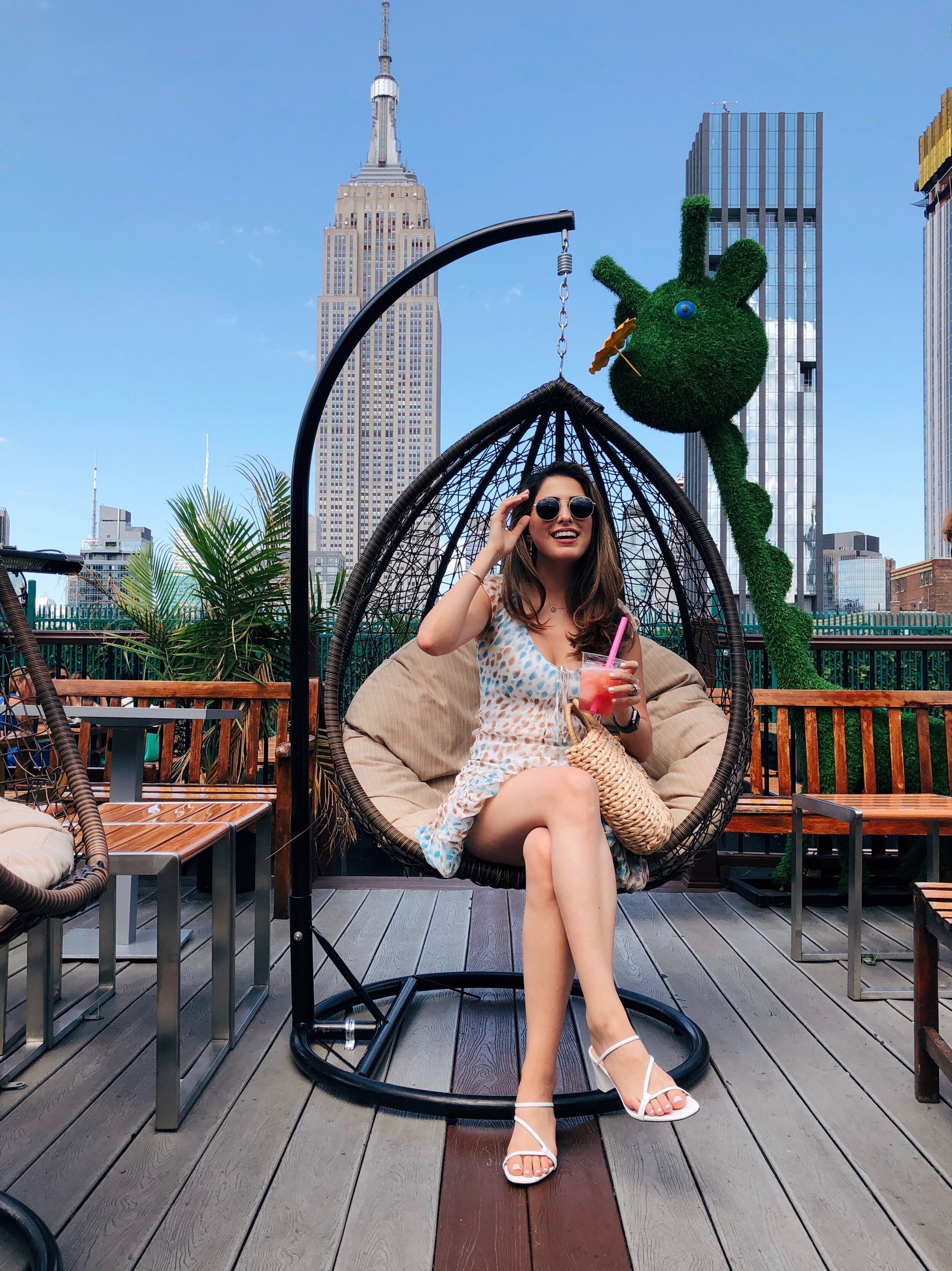Color Psychology
This picture of my friend Ida in a colorful dress shows so much beauty and happiness. When I planned to use her vibrant photo for my blog about color psychology I asked her about this day and why she chose a colorful dress: “I felt excited, as we were celebrating one of my friends leaving to go to med school, and it was a fun girl’s day out.” The color of your outfit can influence the moods and emotions you feel and can determine how others react toward you. Ida was happy and looking forward to a fun day with her friends when she chose to wear her colorful dress. When I saw this photo, it also made me feel excited. So how do people make the conscious or unconscious decision regarding what colors to wear depending on emotions? How do people react toward you based on a color you are wearing?
According to color psychology, color perception involves wavelengths of light that are interpreted based on cultural aspects, past experiences, and emotions. People perceive the color you wear subjectively depending on the meaning behind it and then elicit a response toward you. We interpret that response and may feel an emotion because of it. For example, the color yellow represents joy, so wearing that color might result in someone feeling happy when being around you. In turn, if you are wearing a color that you believe has meaning and feel a certain way because of it, you will elicit that response to others. Has someone ever told you that a particular color looks good on you? If so, do you wear it more often or for special occasions in which you want to be perceived in a positive way? For example, the color red corresponds with higher attraction, so wearing red might cause people to compliment you, making you feel more confident. The next time you wear red you will remember the feeling of confidence, display that to others and then be perceived as a confident person.
Understanding what different colors symbolize to cultures can help you to choose what to wear to receive a positive reaction. Also, wearing a color that you like will boost your mood and the mood of those around you. I love wearing the color pink because it is my favorite color, so when I wear pink I feel happier, which makes me look happier and can make others feel happier, too. The colors we wear show a cycle of emotions!
This can also be applied to the fashion behind interior design. Having certain colors in your home that elicit subjective feelings can make for a more pleasant home environment. Consumer behavior is affected by color in this way, as well. Blue stores are perceived as more calming, less crowded, and more trustworthy. When I think about Tiffany Blue, it makes sense to remember the positive feelings we experience when walking into one of the world’s most beloved stores.
Some facts about color:
Colors with long wavelengths (red and orange) can make us feel aroused or warm.
Colors with short wavelengths (green and blue) can make us feel relaxed or cool.
Red is associated with alertness, aggression, and dominance, (competition), and attractiveness and sexual arousal (dating).
Yellow is associated with joy and energy.
Orange is associated with enthusiasm.
Black is associated with attraction and also wanting to blend in/not draw attention to oneself.
References:
Color Psychology: Effects of Perceiving Color on Psychological Functioning in Humans https://www.annualreviews.org/doi/abs/10.1146/annurev-psych-010213-115035
Behind the blue of Tiffany & Co: A brief history https://my.asiatatler.com/style/behind-the-blue-of-tiffany-co-a-brief-history
Dopamine dressing- can you dress yourself happy? https://www.theguardian.com/fashion/2017/feb/03/dopamine-dressing-can-you-dress-yourself-happy
Mind What You Wear: The Psychology of Fashion https://www.amazon.com/Mind-What-You-Wear-Psychology-ebook/dp/B00KBTB3NS
The Psychology of Fashion https://www.amazon.com/Psychology-Fashion-Everything/dp/1138658677
